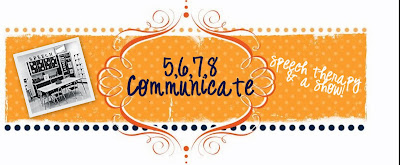As each student walks out the door at the end of the session, they have the option to take a task out of the basket. The tasks change through out the year. Right now my tasks are targeting multiple meaning words.
The students then can discuss the tasks (quietly!) with their group members on the walk back to their classrooms. If they bring it back to speech completed correctly, they get an extra carnival ticket which is entered into a drawing (all part of my behavior management system-will do a post about that sometime!).
The kids all LOVE picking out a Take-Off Task when they leave and I can hear/see them discussing the possible answers with the other kids! I was surprised that about 98% of my students actually do the Take-Off Tasks even though they are optional.
Additional ideas for tasks:
- Antonyms
- Synonyms
- Asking Questions (provide the student with an ANSWER to a question and have them think of a question that would get that response)
- Rhyming
- Analogies
- Verb tense
- Definitions
- Cohesive Ties
Happy Tuesday! :-)







